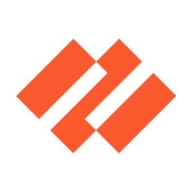

Trend Vision One and Cortex XSIAM compete in the security software category. Trend Vision One appears to have the upper hand due to its comprehensive security features and flexibility in deployment options, whereas Cortex XSIAM excels in integration and threat detection capabilities.
Features: Trend Vision One provides comprehensive security features such as endpoint and network protection, threat detection, and centralized management. It also offers end-to-end visibility and supports various deployment environments. Cortex XSIAM focuses on threat detection and anomaly identification through its unified solution, which leverages a single extensive database for analysis and integrates seamlessly with third-party tools.
Room for Improvement: Users of Trend Vision One suggest enhancing the reporting capabilities, improving integration with third-party tools, and simplifying the deployment process and user interface. Meanwhile, Cortex XSIAM users look for broader integration capabilities, better performance under load, and a more developer-friendly, flexible architecture.
Ease of Deployment and Customer Service: Trend Vision One offers flexible deployment options including public, private, and hybrid cloud environments as well as on-premises installations, catering to diverse needs. Its customer support is generally responsive but may vary based on regional availability. Cortex XSIAM is mainly utilized in public cloud deployments. It delivers consistent customer service but needs to enhance technical competency for complex environments.
Pricing and ROI: Trend Vision One is competitively priced but tends to be higher, especially for smaller organizations. Users appreciate its value-to-price ratio due to effective threat mitigation and time savings. Cortex XSIAM is often viewed as expensive with mixed reviews. However, it aligns well with organizational budget expectations and offers competitive value when additional capabilities like managed threat hunting are considered.
Our company went through a ransomware event, and if Trend Vision One had not stopped it, that could've closed the company's doors.
Trend Vision One has improved our ROI by 30 percent.
Thankfully, we also had cyber security insurance, and the insurance covered the incidents because, through Trend Micro and the implementation of the solution, along with the data it provided, we were able to demonstrate what had happened.
With premium support, core Palo Alto technical experts handle issues directly.
It is ineffective in terms of responding to basic queries and addressing future requirements.
The Palo Alto support team is fully responsive and helpful.
It's not just about high-level support with the chatbot; rather, when an issue occurs, we have the experts on-site and ready to respond swiftly, which is crucial.
Trend Micro supported us throughout the transition from on-prem servers or other vendors, providing top-notch service at all times.
Support responds quickly, and together we’ve been able to solve all challenges in our day-to-day operations.
Without proper integration, scaling up with more servers is meaningless.
Cortex XSIAM is highly scalable.
I’d give scalability a 10 because nearly everything is integrated.
Our growth over the past three years has never caused performance or expansion issues.
I don't think I've encountered any issues with scalability; we're growing steadily, and I believe Trend Vision One can keep up with our demand.
The product was easy to install and set up and worked right.
Overall, Cortex XSIAM is stable.
It works really nice and performs really efficiently after configuration.
Trend Vision One works exactly as intended and has never hindered our operations, feeling more a collaborator than a roadblock.
The stability is very high.
Stability is critically important for us with Trend Vision One; it is very stable, providing continuous 24/7 support.
Obtaining validation for integrations from Palo Alto takes around eight months, which is quite long.
Cortex XSIAM needs improvements in terms of data onboarding, parsers, and third-party integration supports.
Cortex XSIAM is on the expensive side and requires substantial improvement in pricing.
Trend Vision One does not initially disclose to customers that they need to purchase additional licenses and pay more for integrations.
Consolidating case details into a single, more intuitive view would streamline investigations and save time.
The deployment can be complex, and we'd like an easier process, especially when integrating with on-prem and cloud environments.
The first impression is that XSIAM would be more expensive than others we tried.
The product is very expensive.
Cortex XSIAM is pretty expensive, and the licensing process is not very comfortable.
I find the credit model non-transparent—you can't always tell how many licenses apply to which product.
I have seen others that are double or triple the price.
Customers who cannot afford CrowdStrike's pricing can easily opt for Trend Vision One.
The advanced visualization capabilities of the product are important for understanding security trends in an organization.
One of the valued aspects of the product is its use of artificial intelligence to detect security vulnerabilities.
The flexibility for creating manual workflows stands out.
The most important features of Vision One include visibility, AI integration, attack pattern analysis, predictive analytics, and centralized visibility and management across protection layers.
The most critical feature of Vision One is that it gives us a single console for threat management.
Its ability to identify unmonitored endpoints and perform log inspection, which establishes operational baselines and detects anomalies, proves invaluable for threat identification.
| Product | Market Share (%) |
|---|---|
| Trend Vision One | 4.9% |
| Cortex XSIAM | 13.0% |
| Other | 82.1% |


| Company Size | Count |
|---|---|
| Small Business | 9 |
| Midsize Enterprise | 2 |
| Large Enterprise | 4 |
| Company Size | Count |
|---|---|
| Small Business | 40 |
| Midsize Enterprise | 11 |
| Large Enterprise | 34 |
Cortex XSIAM acts as a critical element for SOC foundations, integrating SIEM and EDR capabilities, valued for threat detection and seamless security orchestration with Palo Alto Networks products.
Organizations find Cortex XSIAM beneficial for SOC foundations due to its capability to integrate SIEM and EDR tools, facilitating data collection, detection, and response. It connects with third-party data sources while reducing management effort and offering cost-effective alternatives to competitors like CrowdStrike and Trend Micro. Featuring automation and integration with Palo Alto Networks products, Cortex XSIAM enhances threat detection. Unified architecture allows a comprehensive view of attacks, further supported by machine learning and integration with existing vendor solutions, ensuring that users gain insights without significant manual log analysis.
What are Cortex XSIAM's key features?
What benefits are evident in Cortex XSIAM reviews?
Industries implement Cortex XSIAM mainly in technology-driven sectors where centralized endpoint protection and automation of forensic investigation are paramount. By integrating several third-party systems for incident response, companies in competitive markets leverage its attributes for heightened operational security efficiency. However, users note areas for improvement, such as Attack Surface Management and integration enhancements, to better suit tech-heavy industries needing extensive connectivity with cybersecurity solutions.
Trend Vision One offers comprehensive protection for endpoints, networks, and email with centralized visibility. It is valued for its attack surface management, real-time threat detection, integrated management, ease of deployment, and user-friendly interface.
Trend Vision One provides a sophisticated security platform combining endpoint, network, and email protection with features like virtual patching and advanced AI capabilities. Its centralized management and integration with platforms like Office 365 and Azure make it an attractive option for organizations needing streamlined workflows and efficient risk management. While it boasts robust integrations and ease of use, enhancements are needed in reporting, tool integration, and reducing false positives. Users call for better support infrastructure, faster response times, and improved threat intelligence capabilities. Despite some complexity, its AI and ML features significantly enhance threat detection and response.
What Features Define Trend Vision One?
What Benefits Should Users Look For?
Trend Vision One is implemented in industries that require endpoint protection, ransomware defense, and incident response, being flexible for both on-premises and cloud environments. It is used to monitor servers, networks, and endpoints, providing features like email protection, behavioral detection, and threat visibility. Organizations benefit from AI and ML, improving their security posture and response capabilities.
We monitor all AI-Powered Cybersecurity Platforms reviews to prevent fraudulent reviews and keep review quality high. We do not post reviews by company employees or direct competitors. We validate each review for authenticity via cross-reference with LinkedIn, and personal follow-up with the reviewer when necessary.